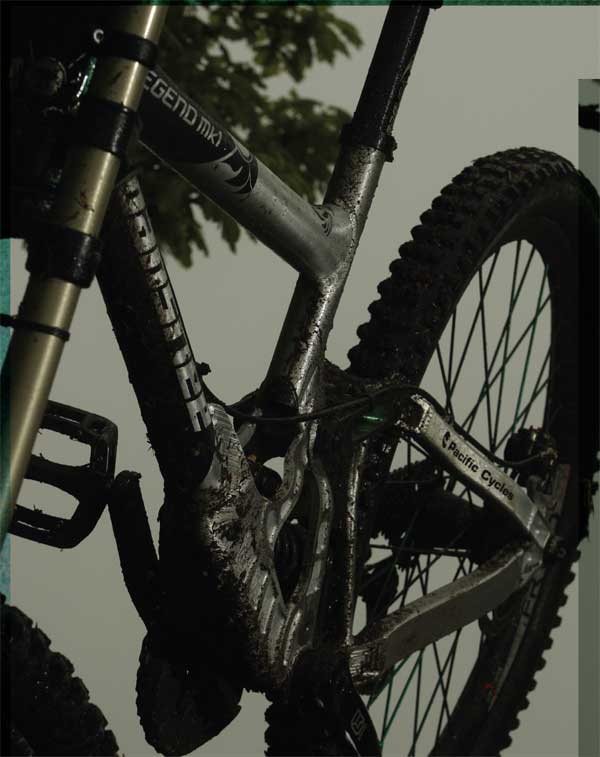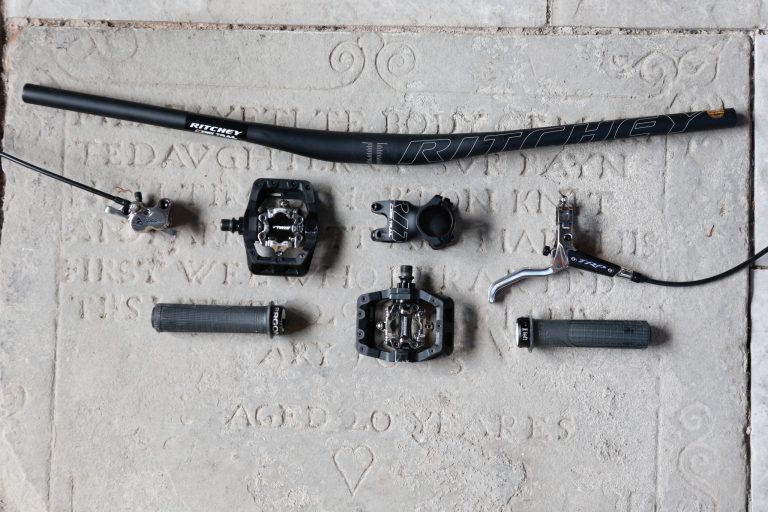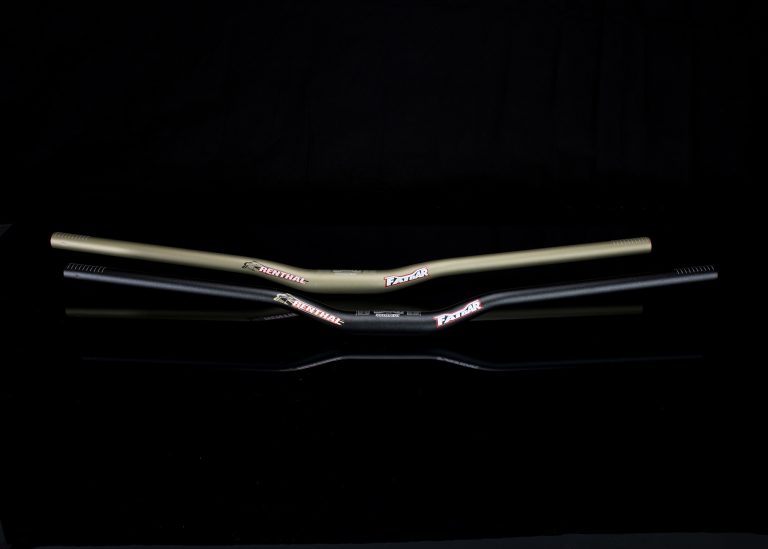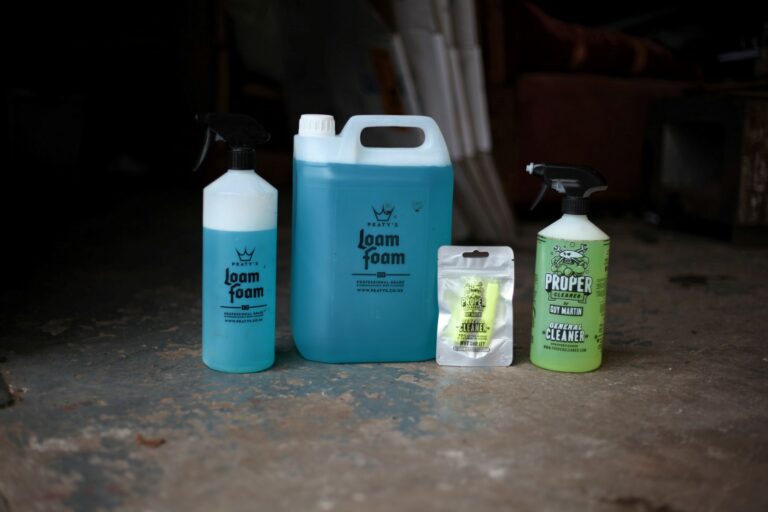
Keith Scott has taken over at Banshee as head engineer and had almost the opposite effect when a link asking for people’s comments on a new design he’d worked on followed a largely positive thread. More than that, some of the more balanced returns resulted in feedback that has been directly inputted into the new bike. The internet it seems can be massively constructive when it needs to.
I first met Keith through a good friend, we’d not actually seen each other face to face mind you, but have had many email and phone conversations over the last few months. I knew a while ago that he had taken over at Banshee bikes as the main designer, but it wasn’t until I saw one of the new Legend designs on a website, largely different from some of the original and somewhat ugly Banshee big hitters, that I got things rolling. Keith put me in touch with one of the test riders over here in the UK, an engineer called Aaron Newman, who subsequently came down to Dirt HQ with what is one of 50 prototypes.
LEGEND PROTO
Obviously as a prototype these pages cannot be seen as a test, but more of a first look into a 2010 product. It looks set to be a good year for the company and a welcome refining of the earlier and slightly crude bikes. We were lucky in that this bike was a large and also came with a Cane Creek shock. The machining provides a unique core to the Legend; the flowing angles give a special feel to the bike. Access is easy to the shock and its adjusters, maintenance is all–round straightforward and the bike is solid and well thought through. What can we expect of the legend when it arrives early next year? Two settings to be replaced with one for starters. The angles that this particular bike produces reminds me of the some of the early M1 bikes. Get up and go, with a higher bottom bracket and steeper head angle which is suited to riders and locations with less than close contours, whilst the slacker position is pretty much your standard downhill race set–up as seen on the majority of downhill race bikes today. All good. Keith has always factored in pedal performance into his design and this is very clear from the outset, but as he points out there has to be a trade off with plushness at
times. The Legend covers ground quickly, but the strong progression on the prototype will be tapered off so that the bike pushes into the travel a little further, this will potentially also allow for more adjustment on shocks such as the Cane Creek. It would be interesting to try a range of shocks on the bike, I’m sure one of the several versions of the RockShox Vivid would suit this design particularly well given the tune range that RS offer.

FUTURE
It’s rare that we get to ride pre–production bikes, as many companies are wary to show their hand (even though they seldom turn out perfect anyway), but it’s definitely a good insight into a small company, its design team and quite unique method of feedback outside of the company. Was it Lionel Ritchie that successfully did this recently? As a prototype it’s close to the finished item, and I have no doubt that it will certainly be a good one. Subtle changes that will be made to the link area will give the bike a better suppleness whilst not affecting its speed across the ground too much. It’s an innovative approach that the Edinburgh based designer is taking. These are changes made out of direct input from riders giving relevant feedback from locations worldwide. Most of all it’s great to see yet another UK designed bike setting some excellent standards.

Q&A
WHO ARE YOU?
My name is Keith Scott, I’m 25. Originally from Glasgow, but I’m currently living in Edinburgh.
WHEN DID YOU BEGIN WORKING WITH BANSHEE?
I started working for them officially in summer 2006. I went over to live in Whistler for a while knowing I had a design job with Banshee, but expected to be working with the old designer (Pippin Osborne), but I quickly realised that I had been thrown into the deep end, and was in fact just ‘the’ designer. I am still the only designer at Banshee, but I get help and feedback from our very helpful and loyal customer base.
IT’S NOT BANSHEE HERE IS IT?
It was originally, but a few years back a certain chain of superstores threatened us with legal action unless we changed the Banshee name, as they sell a bike called the Carrera Banshee. So now we go under the name Mythic in the UK.
HOW DID YOU COME TO GET THE ENGINEER’S JOB?
I guess the first step was working for them part time during the summer after my second year of uni. I got paid in bike parts, and had one of the best summers of my life riding all over BC and living in Vancouver. That got my foot in the door. Since this industry tends to be fairly informal, knowing the right people is key. Nothing more came of it until I had to choose the subject to base my thesis on during the final year of my Masters. I decided to approach Banshee about designing a DH frame for them, and my project (this was way back in 2005). They happily agreed, and Project Legend was born! At the end of the year, I sent them a copy of my thesis and I was offered the job there and then. I have dreamt about being a mountain bike designer since I was about 13, so I jumped at the chance.
WHAT WERE YOU DOING AT THE TIME?
I came straight out of university into the job. My previous engineering jobs (gap year and summer placements) included working for Rolls Royce (turbine design) and corporate–style engineering for a large international company.
WHAT IS YOUR BACKGROUND IN BIKE DESIGN?
Well…I have a masters degree from Durham University in mechanical engineering, and specialized in dynamics. I’ve also ridden mountain bikes since I was 10, so have years of practical experience too. I worked as a mountain bike guide in Whistler for one summer with Ticket to Ride BC, and spread the joy of riding with a lot of people. I’ve travelled every summer for the last seven years to ride. I’m definitely not just a number cruncher.
TELL US ABOUT THE BIKE PRE–KEITH SCOTT?
What bike? Ha ha. There were no plans to design anything new at Banshee before I joined up. Things were slowly dying, and I saw it as a great opportunity to step in and re–vamp the whole company image with Jay MacNeil (my colleague) as well as design a whole new range of bikes. I wanted to make a purebred race machine to be the flagship and represent what the brand is all about…performance.
WHAT ABOUT THE REST OF THE RANGE?
I have designed all the new bikes in our range over the last three years or so. Nine bikes and counting. The old Banshee range was overbuilt and starting to look dated, things had to be shaken up.
WHAT ARE YOUR AIMS WITH THE RANGE?
My aim when designing every bike is to make it as good as it can possibly be for its specific riding discipline. I believe that there is no one style of linkage design that is ideal for all types of bikes, rather I choose what I feel is the best style of linkage for the discipline. For example, the Wildcard uses a linkage actuated single pivot design, to keep the rear end laterally stiff and simple, whilst giving the bike a very predictable and lively feel, whereas the Legend uses a short link 4–bar design so that I could optimize the linkage to have active suspension under braking and isolate pedalling forces, as well as fine tune leverage ratio and axle path etc. I am lucky enough to have a plethora of customers dotted all over the globe who regularly give me great feedback and ideas. I really like to tap into this source, as these are the guys who will be riding the bikes at the end of the day. After
machine loading and testing, all our prototypes are sent out to hardcore riders (not necessarily pro riders, but all core riders) who put them through their paces and give me real world feedback. Every aspect of my designs is done for a reason. I don’t believe in marketing gimmicks – I would much rather let the bike do the talking.
SOME GOOD FEEDBACK ON SOME WEBSITES ABOUT THE BIKE?
You are the first media guy to have any decent time on the Legend. However, we have sent almost 60 of them to racers all over the world to get real world feedback. They have been raced in multiple World Cup finals, and the World Champs last year. They are also ridden by more local scene racers. Everyone who has a pre–production bike has sent me their feedback and ideas, and I am taking it all onboard to refine and improve the design. But general feedback is very positive indeed.
WHAT WAS AARON’S POST?
Aaron is one of our test riders who applied to ride the bike last year, we picked the best 50 of the applicants based on engineering and racing experience and shipped bikes out to them. He is one of only three people in the UK riding Legends, including me (a big chunk of the testers are in Australia, as the batch timing worked well with their DH race series). Aaron is a great guy, and has given me lots of very accurate and informative feedback as well as support and ideas.
SOME NEGATIVE, HOW DO YOU FEEL ABOUT BRAINLESS POSTS?
Ha ha, oh man, where do I start?! They can be incredibly frustrating, as one brainless and inaccurate post can single–handedly destroy a company’s reputation if people latch on to it. I’ve heard all sorts of things about my bikes that I didn’t know, including them being welded by child slaves and all sorts of absolute rubbish like that. Normally I just ignore it and move on, as the vast majority of the time a real customer who actually knows what he is talking about will chime in to our defence. But sometimes I will just lay the facts on the table and let people make their mind up for themselves what they choose to believe.
WHAT DID YOU SET OUT TO ACHIEVE WITH THE LEGEND IN TERMS OF RIDE CHARACTERISTIC?
The Legend is all about speed, after all that is what DH racing is all about. The frame and linkage has been optimized for speed. It is a pure race machine, with slack geometry and very low centre of gravity (CoG). I wanted a big travel frame that was lightweight and pedalled like a shorter travel bike, but could take the hits? The initially rearward axle path is designed to give the bike stability at speed and to suck up the small square edge bumps. There are a lot of decent DH race bikes out there, but a lot of them feel quite dead to ride I have found. Not only is the Legend fast to ride, it is also lively and fun. Cornering is all–important in DH racing, as the racers out there will testify. If you can go round, and most importantly exit, a corner with speed, then you carry that speed the whole way through the next section. The heaviest element of a DH frame is always the rear shock, so I designed the frame to position the shock as low in the frame as possible, whilst still protecting from mud and rocks. Obviously it is combined CoG of the rider and bike that matters, so a low BB is a must. A low CoG makes cornering easier and a bike more stable, which gives the rider more confidence to push their limits.

FIFTY RIDERS WITH PROTOS…HOW HAS THAT PANNED OUT? THAT’S ONE HELL OF A LOT OF FEEDBACK?
We wanted to get this bike right first time. So testing and feedback is crucial. We produced the first Legend prototypes way back in April 2008 and they were given to two racers from South America (Markolf Berchtold and Marcelo Guiterrez) who were about to compete in the Pan American Championships.We got the frames to them the week before the race, and we got two golds, in elite, and junior; not bad for their first race on the bikes! Four months later we produced two second generation prototypes, one came to me, and another went to a racer who was looking for a bike to ride, a certain Mick Hannah. Mick gave me great feedback, and got some top results on it before he got snapped up by a bigger company with more cash to throw around. I rode mine for a couple of hard Whistler bike park months to see not only how well it rode, but also how it took the abuse.
Around the same time, we posted on our blog and a few forums that we were looking for test riders. 50 next generation, but still preproduction frames were up for grabs at cost price and with full follow up support. The response was awesome! We picked the cream of the crop for feedback, and got things rolling. Now we have 50 frames under 50 racers in no fewer than 19 countries around the world. This means that all 50 frames are being used and abused in a whole variety of conditions. All riders agreed to fill out detailed feedback forms covering all bases. The testers have been amazing, they have pointed out a few minor issues which I have already resolved by redesigning, and also compared the bike with their previous machines to let me know if there are any aspects of the bike that don’t live up to their expectations, but to be honest the vast majority of feedback has been very positive.
WHAT CHANGES WILL YOU BE MAKING?
Well, the original prototypes had two travel settings, 7” and 8.5”. However the 7” setting felt over–damped with every shock we tried due to the low overall leverage ratio of 2.33:1. So I’m changing the linkage to have only one travel setting of 8”. I’m also lowering the BB slightly more (13.7”), slackening the head angle to 63.8º, slightly reducing chain stretch, making the leverage curve a bit more linear (although still progressive overall with a subtle pedal platform designed into it). I’ve also redesigned the shock basement area to increase strength and pivot tolerances and reduce weight. The overall weight of the frame is likely to reduce by around 200g without sacrificing strength. I am also currently testing some state of the art material treatment processes, which are looking like they will massively improve performance.
HOW WILL THE CHANGES AFFECT THE RIDE CHARACTERISTIC?
There should be slightly less initial anti–squat and overall pedal kickback, the bike will feel lower and more stable as it will sit slightly further into the travel due to the more linear leverage curve. I am also working with the Cane Creek guys to get a custom tuned Double Barrel option for Legend riders, which should make a world of difference, as up to now we have just been using standard tuned shocks. Combined with the Legend’s very high lateral stiffness, these changes will result in a frame that not only shoots out the gate, but also soaks up all the rocks and roots on the trail, offering the rider maximum traction and control.
CLOSE TO YOUR ORIGINAL OR NOT?
Ha ha, in my opinion…not really! A lot of the initial design characteristics and ideals will remain, but it has been refined a total of nine times now over four years. It might look fairly similar to the original design…sort of, but the devil is in the detail.
CAN YOU TELL US A BIT ABOUT PRICING/DISTRIBUTION?
Pricing is yet to be confirmed, but we are working hard to undercut a lot of the (in my opinion) overpriced and over hyped frames out there, despite the fact that the Legend is very expensive to produce. The Legend will only be available as a frame–only option with a choice of shocks (currently looking like a Fox RC4 and Cane Creek DB). In the UK the frames will be available from www.freeborn.co.uk. Release date will be early next year. z






